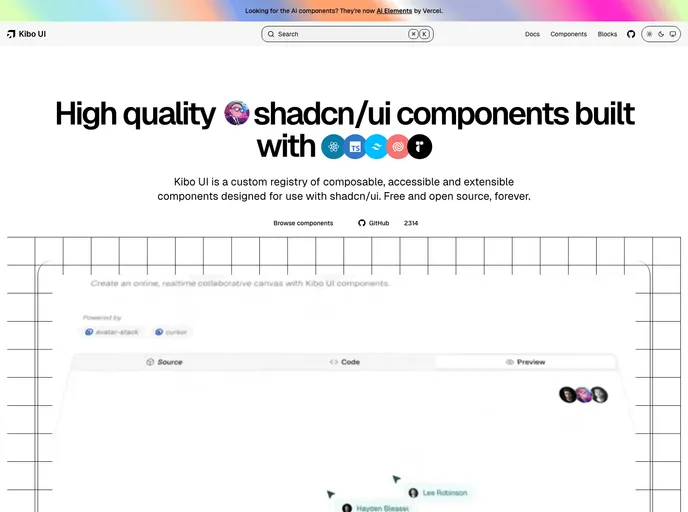
A custom registry of composable, accessible and open source shadcn/ui components.
Kibo stands out as a powerful tool for developers seeking to streamline their UI component design process. As a custom registry of composable, accessible, and open-source shadcn/ui components, it provides a solid foundation for building applications. Its focus on accessibility ensures that developers can create inclusive user experiences while promoting the reuse of components, enhancing both efficiency and design consistency.
The open-source nature of Kibo encourages collaboration within the developer community, allowing users to contribute to and benefit from a growing library of components. With an emphasis on composability, Kibo makes it easy for developers to mix and match components to create tailored solutions for their projects.
Composable Components: Kibo’s components are designed to be easily combined, allowing developers to create unique UIs that meet their specific needs.
Accessibility Focused: Every component in the Kibo registry is built with accessibility in mind, ensuring a better experience for all users, including those with disabilities.
Open-source Community: Kibo’s open-source model encourages collaboration, enabling developers to contribute new components and enhancements to the existing library.
Customizable Design: Each component is highly customizable, providing flexibility in styling and functionality to fit different project requirements.
Efficient Development: With a rich library of pre-built components, Kibo allows developers to accelerate their workflow and reduce time to deployment.
Regular Updates: Kibo benefits from community contributions, ensuring that the component library is continuously updated and improved with new features and bug fixes.
Extensive Documentation: Comprehensive documentation is available, guiding developers on how to effectively utilize the components and customize them for their projects.